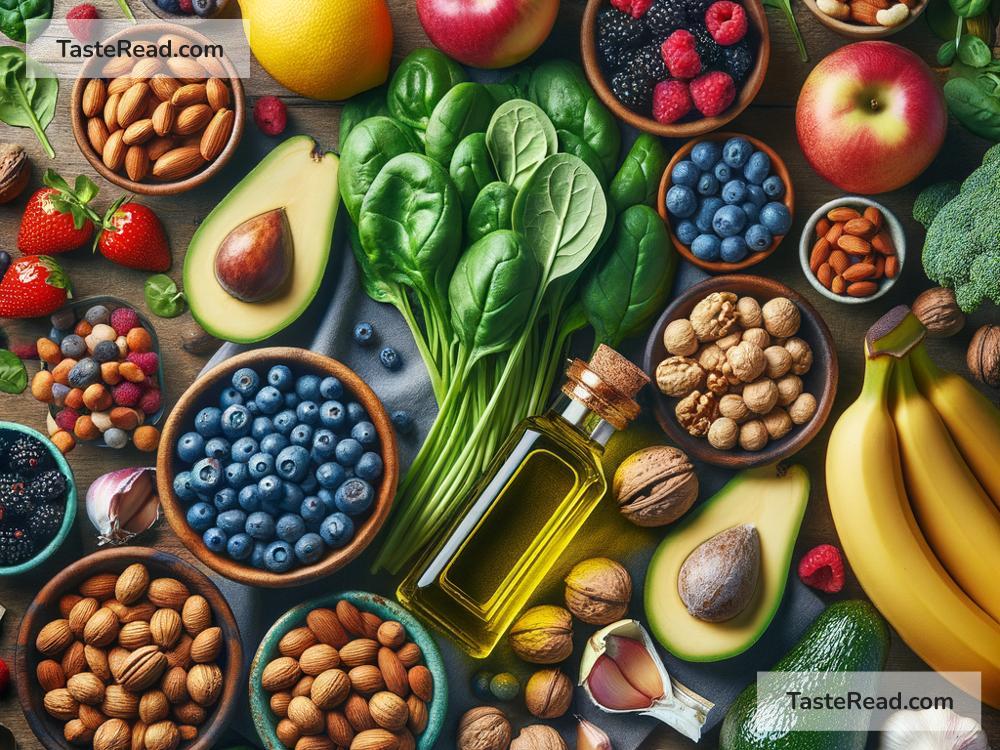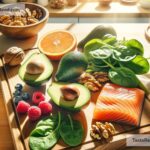Foods That Reduce Blood Pressure: Simple & Healthy Choices
High blood pressure, also known as hypertension, is a common health problem that affects millions of people around the world. It increases the risk of heart disease, stroke, and kidney problems. The good news is, making healthy food choices can help lower your blood pressure naturally. In this article, we’ll explore everyday foods that are known to reduce blood pressure in simple and easy-to-understand terms.
Why Your Diet Matters for Blood Pressure
Blood pressure is the force of blood pushing against your artery walls. If this force becomes too high, it can damage your arteries and lead to serious health issues. Certain nutrients in food can help relax blood vessels, reduce inflammation, and control fluid levels, all of which help manage blood pressure. By incorporating these foods into your diet, you can lower your numbers and improve your overall health.
1. Leafy Greens
Leafy greens like spinach, kale, collard greens, and arugula contain potassium, a key mineral that helps balance sodium levels in the body. Sodium makes your blood pressure go up, while potassium helps your kidneys flush out excess sodium through urine. The less sodium in your system, the lower your blood pressure.
Try adding a handful of spinach to your smoothie, tossing kale in a salad, or steaming some collard greens as a healthy side dish.
2. Beets
Beets are rich in nitrates, which are natural compounds that improve blood flow by relaxing and widening your blood vessels. This leads to lower blood pressure. Drinking beet juice or eating roasted beets regularly can make a big difference in your numbers.
If you’re not a fan of plain beets, try adding them to a mixed vegetable roast, blending them into a smoothie, or grating them into a salad.
3. Bananas
Bananas are another potassium-rich food that helps manage high blood pressure. They are easily accessible, affordable, and make a great snack or breakfast addition. Pair a banana with oatmeal, yogurt, or simply enjoy it as is.
Other potassium-rich options include oranges, apricots, cantaloupe, and avocados.
4. Oats
Oats are an excellent source of fiber, specifically a type called beta-glucan. This helps lower LDL (“bad” cholesterol) and supports healthy blood pressure levels. Starting your day with a bowl of oatmeal is a great way to get the benefits of oats.
For added flavor and nutrition, top your oatmeal with fresh fruit, nuts, or a drizzle of honey.
5. Fatty Fish
Fatty fish like salmon, mackerel, trout, and sardines are high in omega-3 fatty acids. These healthy fats reduce inflammation and decrease the production of compounds that tighten blood vessels, which helps lower blood pressure.
Aim to eat fatty fish at least twice a week. You can grill, bake, or pan-sear salmon for a tasty meal, or add canned sardines to a salad for a quick nutrient boost.
6. Garlic
Garlic is a natural powerhouse for heart health. It contains allicin, a compound that helps relax blood vessels and improve blood flow, reducing blood pressure. Raw garlic provides the most benefits, but cooked garlic can still be helpful.
Try adding garlic to soups, stir-fry, sauces, or even eating a small raw clove (if you can handle the taste!).
7. Berries
Berries like blueberries, strawberries, raspberries, and blackberries are packed with antioxidants, especially flavonoids. These compounds can improve the health of blood vessels, reduce inflammation, and lower blood pressure.
You can enjoy berries as a snack, add them to yogurt, or blend them into smoothies.
8. Dark Chocolate
Good news for chocolate lovers! Dark chocolate, especially the kind with 70% or higher cocoa, is rich in flavonoids that promote heart health. Eating a small piece of dark chocolate daily may lower blood pressure and improve circulation.
Remember to eat dark chocolate in moderation to keep sugar and calories in check.
9. Nuts and Seeds
Walnuts, almonds, sunflower seeds, and pumpkin seeds are high in magnesium, which helps relax blood vessels and regulate blood pressure. They also contain healthy fats and protein, making them a great heart-friendly snack.
Opt for unsalted nuts or seeds to avoid excess sodium while enjoying their benefits.
10. Yogurt
Low-fat or plain yogurt is an excellent source of calcium, a mineral that plays a key role in maintaining healthy blood pressure. Studies show that people who eat yogurt regularly tend to have lower blood pressure.
For extra flavor, add fresh fruits or nuts to your yogurt bowl.
Quick Tips for Lowering Blood Pressure with Food
While these foods can help lower blood pressure, they’re even more effective when combined with an overall healthy lifestyle. Here are some simple tips to keep in mind:
– Reduce your salt intake by avoiding processed and fast foods.
– Drink plenty of water to stay hydrated and flush out excess sodium.
– Aim for a balanced diet with lots of fruits, vegetables, whole grains, fish, and nuts.
Conclusion
Managing high blood pressure doesn’t have to mean strict diets or giving up tasty food. By incorporating these healthy choices into your daily meals, you can naturally lower your blood pressure and improve your heart health. Simple adjustments, like eating more leafy greens, snacking on fruit, or enjoying a piece of dark chocolate, can lead to big health benefits over time. Remember, small changes can make a big difference in how you feel!
Start incorporating these foods into your meals today, and give your heart the love it deserves.


